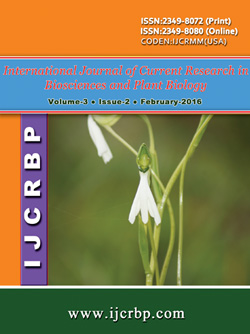 |
Online ISSN : 2349-8080 Issues : 12 per year Publisher : Excellent Publishers Email : editorinchiefijcrbp@gmail.com |
Bark can help to defend trees and lianas against abiotic and biotic disturbances. Bark traits have long been used to characterise tree fire resistance and physical features like texture, anatomy, fissure and sealing can influence the effectiveness of bark in protecting trees from fire, herbivory and microbial infections. We investigated bark traits of 105 woody species (60 trees and 45 lianas) in Indian tropical dry evergreen forest, and the relationship between bark thickness and sap quantity with faunal diversity, to assess the ecological use of bark resources as space and food by various fauna in tropical dry evergreen forest. Bark thickness of tree species in the studied forest varied from 0.02 to 2.23 ± 0.22 cm (maximum for Garcinia spicata and least for Gmelina asiatica) and those of lianas varied from 0.01 to 1.23 ± 0.02 cm (maximum for Plecospermum spinosum and least for Cissus quadrangularis). A total of thirteen species of tree nesters and five species of wood borers utilized bark resource in tropical dry evergreen forest and most common among them include termites (30.47 %) followed by ants and millipedes. The association between bark traits and faunal occurrence was analysed with principal component analysis (PCA) and trade-offs were ascertained with bivariate Pearson correlation. Evidently bark texture, fissure and thickness play a positive role in accommodating fauna (p<0.01) in tropical dry evergreen forest. The co-occurrence among bark faunal groups is also evident and the highest values of co-occurrence were recorded for ants – millipedes. Our results reveal that bark traits of woody species provide suitable habitat for wood borers and tree nesters. This study provides a ground work for further investigation on the functional aspects of bark in tropical woody species.
